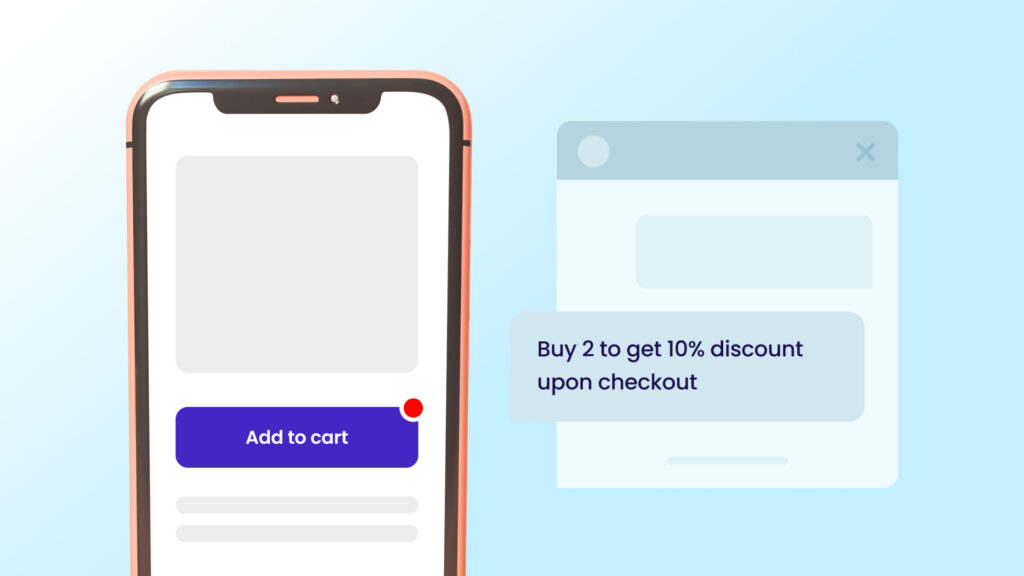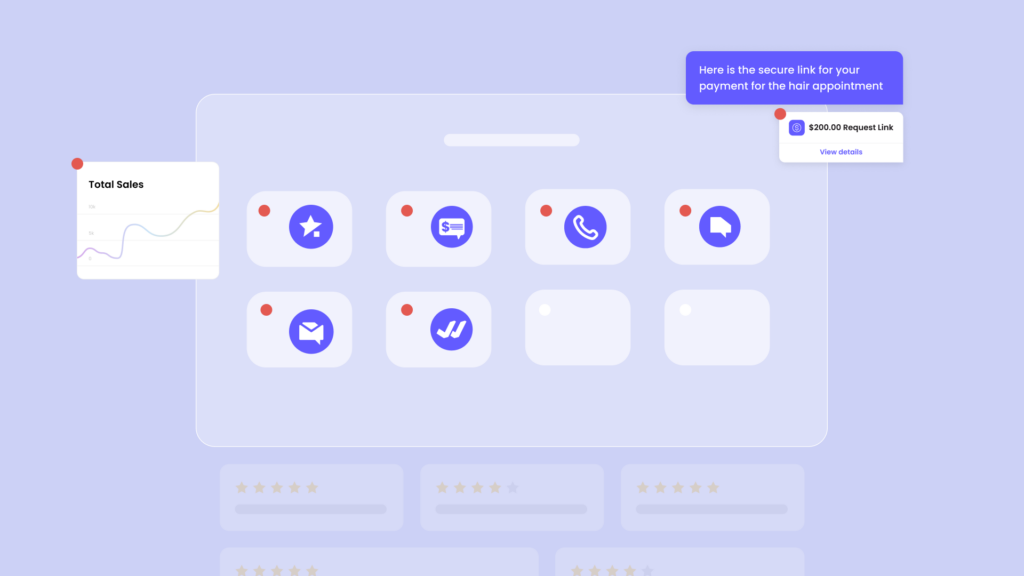As online businesses continue to grow and evolve, one thing remains constant: the importance of good customer service. And delivering exceptional customer service is the key to standing out from the crowd and building a loyal customer base. It’s no longer enough to offer great products or services though, customers also expect a positive and hassle-free experience when interacting with your business.
But what does good customer service look like in the online space?
In this article, we’ll explore the different tactics that online businesses can use to provide top-notch customer service, examine the specific challenges that come with providing customer service in the online space, such as the need to provide fast and effective support across multiple channels, and explain the importance of building trust with customers who may never have met your business in person. We’ll also discuss the latest technologies and tools that can help businesses improve their customer service, from chatbots and automated response systems to analytics and customer relationship management (CRM) platforms.
By the end of this article, you’ll have a better understanding of the key tactics that your online business can use to deliver excellent customer service and the steps you can take to build stronger relationships with your customers.
Understanding your customers
As with most things to do with business, online or physical, the first step to delivering exceptional customer service is to understand your target audience. Knowing exactly who your customers are, what they want, and how they like to interact with your business, can help you build stronger relationships and create a more personalised experience that exceeds their expectations and sets your business apart from the competition.
Here are some key strategies you can employ to understand your customers and deliver a better experience:
Create customer personas
If you haven’t already done so earlier in your business start-up phase, you should start by creating detailed profiles of your target customers. Consider their age, gender, location, interests, and purchasing habits, and then use this information to create customer personas that will help you guide all your marketing and customer service efforts.
Conduct market research
Surveys, focus groups, and other research methods can help you gather information about your customers’ needs, preferences, and pain points. This will help you understand the language and messaging that resonates with your target audience and, more importantly, identify areas where you can improve your products or services.
Use analytics
Monitor website analytics, social media metrics, and other data to gain insights into your customers’ behaviour. For example, you can track which pages on your website are visited the most, which products are the most popular, and how customers interact with your social media channels.
Collect customer feedback
It’s important to encourage and make it easy for your customers to share their feedback with you. Whether it’s through surveys, product reviews, or customer support interactions, you can then use this feedback to discover what your customers love about your business and identify areas for improvement.
Providing excellent customer support
Excellent customer support should always be the most important factor for any business, not just a ‘nice-to-have’ option! Interestingly, Shep Hyken’s 2020 ‘Achieving customer amazement study’ found that 96% of customers would stop doing business with a brand if they had a bad experience. While this number has gone down to 74% in the 2022 report, the question you need to ask is, is it worth losing three-quarters of your customers for something as simple as politeness? Rudeness is the number 1 reason customers leave.
And in today’s fast-paced digital world, customers expect to be able to get the support they need quickly and easily, no matter where they are or what device they’re using. So here are some tips to help you improve your online customer support:
Make it easy to contact you
Offering multiple communication channels, such as email, phone, chat, and social media makes it easy for customers to get in touch and allows them to choose the most convenient channel for them. Magic Inbox allows you to collect all customer questions from various channels, including SMS, Facebook, Instagram, and Gmail, into one Inbox so you can respond faster. You can also view, assign and change conversation status to the right team member for faster responses and better customer experience, and synchronise customer information from all connected channels to build a powerful customer database so you can have better a understanding of your customers’ needs and purchase history.
Make use of technology
Consider using chatbots, automated response systems, and self-service support options to help customers get the answers they need quickly and easily, which can help reduce wait times and improve customer satisfaction. With Magic Webchat you can gather questions in real-time into a single inbox so you’ll never miss a lead, can respond easily, improve your customer support experience and convert website visitors to customers. You can also connect with customers the way want by taking the initial conversation straight to text, and give them the support they need when they need it without having to call or email
Personalise responses
Personalising your responses to customer queries, such as using their name, acknowledging their issue of question and then tailoring your response to their needs, can go a long way in building a relationship with them. For example, if a customer contacts you via email about a product they’re interested in, provide them with personalised recommendations based on their preferences and buying history.
Be empathetic and understanding
It’s essential to be empathetic and understanding to every query. By putting yourself in their shoes and acknowledging their frustration or disappointment, you can help diffuse the situation and show you care about their experience with your business.
Respond quickly
Customers want to feel heard and validated, and the longer you take to respond, the more frustrated they become. It’s important to have a system in place to respond to queries as quickly as possible. If a customer contacts you via email, social media, or text, make sure to respond within 24 hours.
Train your team
It doesn’t make if you’re a small business with a few employees or a large company with a dedicated support team, you should provide them with the training and resources they need to handle customer questions and complaints quickly and effectively, encourage them to take ownership and empower them to make decisions and take action to resolve problems.
Handle with care
While apologies are essential when customers complain, they won’t solve the problem. It’s important to be respectful and professional, even if the customer is angry or upset, listen to their concerns, apologise for any inconvenience or frustration they’ve experienced, and work with them to find a solution. For example, if there’s a problem with a product, offer a replacement, a refund, or a credit, or if it’s an issue with the delivery of their order, offer to expedite shipping or provide a discount on their next purchase.
Follow up
When the conversation has finished, follow up with the customer to ensure they’re satisfied with the resolution. This shows that you value their business and are committed to providing a great customer experience.
Building trust and loyalty
In the online space, where customers may have limited interactions with your business beyond the digital realm, providing excellent customer support and understanding customer needs are critical components of building trust and loyalty. When customers have positive experiences with you and feel valued and supported, they’re more likely to trust you, continue doing business with you, and recommend your products or services to others. Building trust and loyalty through positive interactions and personalised experiences is an important customer service tactic that can help set your online business apart and establish a competitive edge.
Over-deliver
Make sure you’re delivering, even going above and beyond, on the promises you make to your customers, such as meeting delivery times, providing high-quality products or services, and providing the level of customer support you advertise. When you consistently deliver on your promises, customers are more likely to trust and continue doing business with you.
Provide personalised experiences
Personalisation helps create positive experiences and memorable interactions for your customers. You can use customer data and feedback to create personalised recommendations, promotions, and content that meet their specific needs and preferences.
Always be honest
Being open and honest about your business practices, pricing, and policies, and addressing any concerns or issues promptly and transparently, shows customers that you’re committed to providing a positive experience.
Reward loyalty
Implementing loyalty programs or giving rewards to repeat customers can help build a sense of appreciation and reinforce the value you place on their business.
Using technology to improve customer service
As business moves more and more online, it’s becoming increasingly important to leverage technology to provide an exceptional customer service experience. Technology such as social media, live chat, chatbots, self-service portals, and CRM (customer relationship management) software, or specialised software, such as Magic, can provide many benefits for online businesses, such as providing faster, more efficient, and more personalised customer support, saving time and resources, and improving customer satisfaction and loyalty.
However, with so many different customer service technologies available, it can be overwhelming to know which ones to use.
Where do you start?
Here are some tips for choosing and implementing the right technology for your business:
Identify your needs
Consider the size of your business, your customer base, and the types of customer queries you typically receive to determine what kind of customer service technology would be most beneficial for your business.
Research options
When you have identified your needs, you can research various technologies and compare their features, including ease of use, cost, and integration with other business systems.
Test and evaluate
You wouldn’t buy a car without taking it for a test drive, so why should technology be any different? Most platforms will offer a free trial where you can test it out and evaluate its effectiveness for factors such as customer response times, ease of use, and customer satisfaction.
Train your team
When you have moved forward with your chosen technology, it’s imperative that your team, large or small, is trained on how to use it effectively to ensure they can provide the best possible support to your customers.
Measure and analyse customer services
To deliver exceptional customer service experience, it’s important to understand what your customers want and need, and whether you’re meeting those expectations. And by tracking and analysing key performance indicators (KPIs), you can gain valuable insights into the effectiveness of your customer service efforts and identify areas that need improvement, as well as areas that are already performing well.
But what key metrics should you track?
First Contact Resolution (FCR)
What percentage of customer queries are resolved on the first contact with customer support? A high FCR rate is a sign your support team is knowledgeable and efficient, which can help to improve overall customer satisfaction.
Response Time
How long does it take for a customer to receive a response to their query? These days, customers expect prompt responses to their inquiries, and a long wait time can lead to frustration and dissatisfaction.
Customer Satisfaction (CSAT)
How satisfied are your customers with the service they receive? This metric can be measured through feedback forms, surveys, or other tools that allow them to provide feedback about their experience.
Net Promoter Score (NPS)
How likely is it that a customer will recommend your business to others? Customer referrals are one of the most effective forms of marketing, making it an important metric to measure.
Customer Retention Rate
What percentage of customers have continued to do business with you over a given period? A high retention rate indicates your customers are happy with the service they’re receiving.
Use data to improve your customer service
Analyse trends and patterns
Look for patterns in the data to identify areas that need improvement. For example, if you notice that customer satisfaction is low on a particular day of the week, you may need to adjust your staffing levels or processes to improve service during that time.
Communicate findings with your team
Share the data with your team and encourage them to use it to improve their performance. You may find that certain team members are more effective at resolving customer questions, or that some types of queries take longer to resolve than others.
Make changes
Use the data to identify areas that need improvement and make changes to your customer service strategy. For example, if you notice that response times are slow, you may need to implement new tools or processes to speed up response times.
Key takeaway
Your customers are the lifeblood of your business, and providing exceptional service should be your top priority. Putting their needs first and making their satisfaction a central focus can help you differentiate yourself from your competitors and position your business for long-term success.
Providing fast and effective customer support, building trust and loyalty, and using technology to improve customer service are all important tactics, but you should also measure and analyse customer service metrics to make data-driven decisions and identify areas for improvement.
By implementing these strategies and continually striving to improve your customer service, you can create a positive and memorable experience for your customers, build strong relationships with them, and ultimately drive the growth of your business.
About Magic
Magic helps local businesses grow. Thousands of local businesses use Magic to get more online reviews, win new customers, easily manage customer conversations and grow sales. Magic offers these features:
- Reviews: Get more reviews with easy review requests for popular review sites like Google, Facebook, Yelp, TrustPilot, and more. Rank high on local search and enhance your visibility on Google.
- Inbox: Keep track of customer conversations across channels in one inbox, including SMS, Facebook, Instagram, and Gmail. Manage conversations better as a team and do more with industry specific templates.
- Text Marketing: Drive more sales with instant text campaigns and reach your customers at the right moment with automation. Use prebuilt templates to send out text campaigns in minutes.
- Webchat: Turn website visitors into customers with SMS powered Webchat. Chat to website visitors directly through SMS so you won’t miss a lead, even when they leave your website.
Looking to grow your local business? Book in a demo call now. Follow us on Instagram and Facebook



